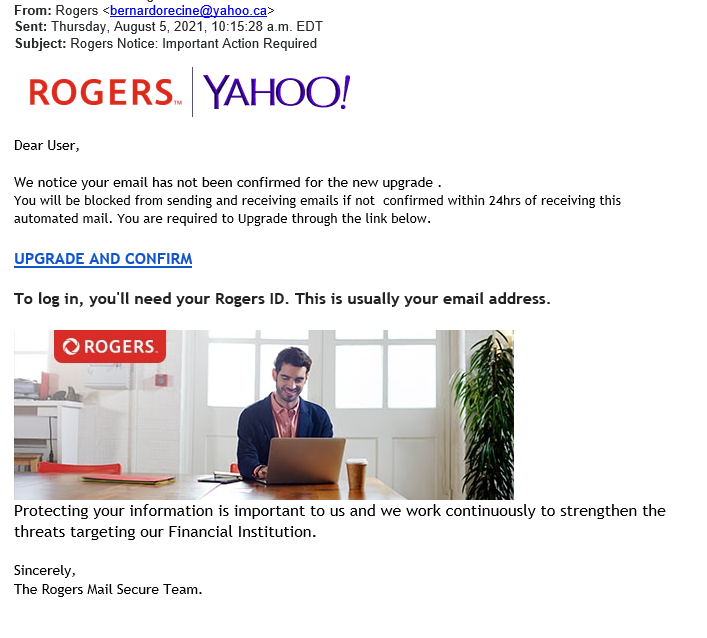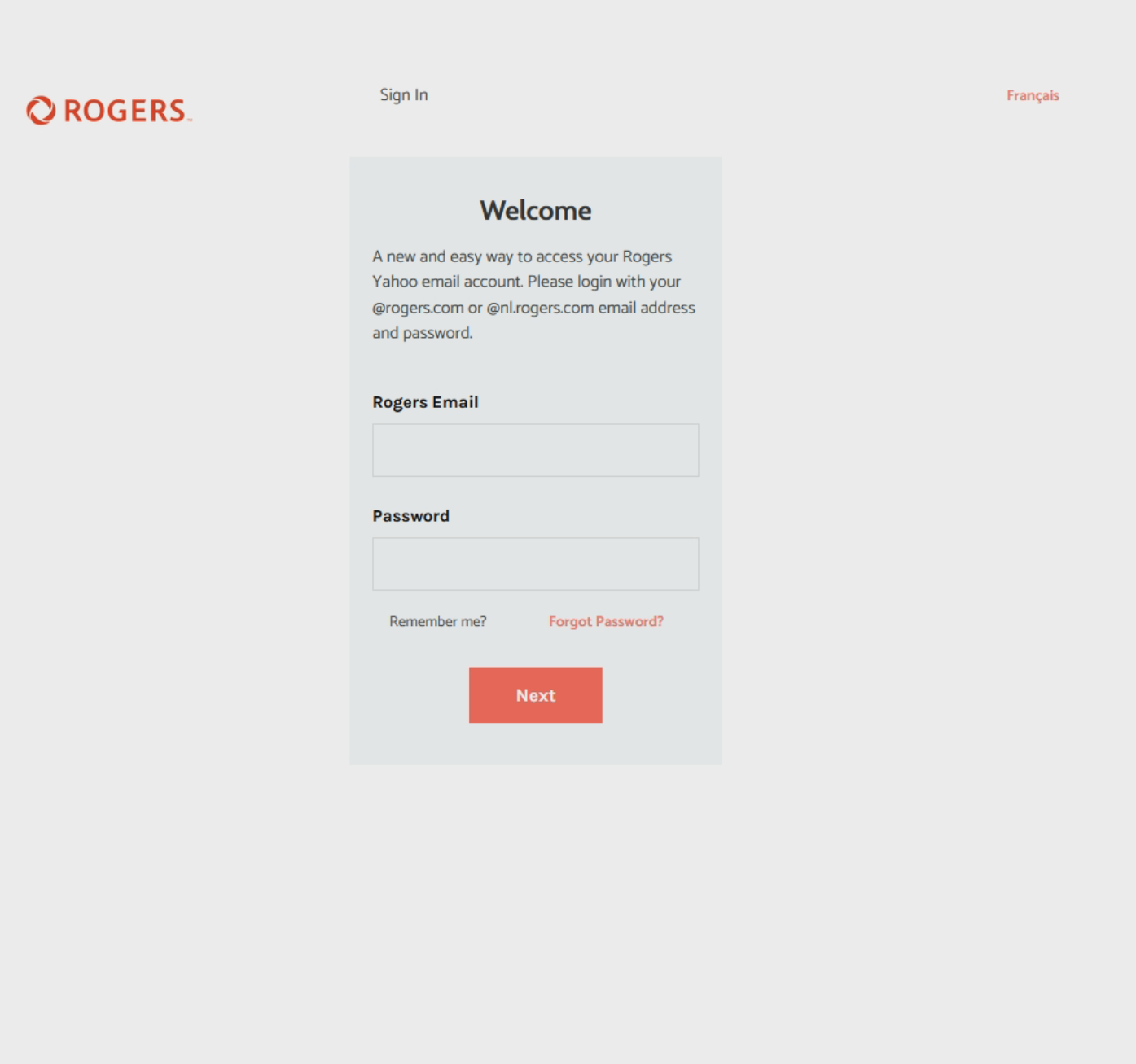
Recently Rogers & Yahoo account holders have experienced Spear Phishing and Phishing attempts.
Phishing Email Example:

If you click the "UPGRADE AND CONFIRM" link in the email it will send you to "https://rogersmembercomhtmluserid.weebly.com/" a fake site setup by the threat actor.
Fake Rogers Login Page:

Phishing and spear phishing are very common forms of email attack designed to you into performing a specific action—typically clicking on a malicious link or attachment. The difference between them is primarily a matter of targeting.
- Phishing emails are sent to very large numbers of recipients, more or less at random, with the expectation that only a small percentage will respond. An apparently official email from, say, a well-known delivery company might arrive, saying that “Your package has been delayed, click here for details.” Click the link and malware might be downloaded onto your device, or you might go to a fake website where you’re asked to enter your name, address, and social-security number. That information would then be sold on the black market or used for fraud or identity theft.
- Spear phishing emails are carefully designed to get a single recipient to respond. Criminals select an individual target within an organization, using social media and other public information—and craft a fake email tailored for that person. For example, share online that you will be traveling to Chicago soon, and you might get an email from a colleague (apparently), saying “Hey, while you’re in Chicago you’ve got to eat at Joe’s Grill, check out their menu.” Click the link, and while you’re studying the menu, malware is inserted into your computer. Another version might apparently come from your CEO, who’s traveling abroad and says his phone and wallet and briefcase have been stolen, can you wire five thousand dollars to this number right away?
This message is from Rogers Cyber Security Page:
---------------------------------------------------
Here are some important questions to ask:
- Do you recognize the sender? Check the email address, not just the sender’s name. Red flags could include extra words, symbols, or substituted letters in the address, especially the domain.
- Are you asked to click on a link or open an attachment? Instead of clicking a link or opening an attachment – which can house malware, go directly to the source’s official site by searching in a new browser.
- Is your personal information being requested? Consider this a red flag immediately. Major institutions such as banks and government services will not request personal information to be sent through email or text.
- Are you being asked to do something? Be cautious if you’re prompted to respond quickly or urgently, provide information or click on a link or attachment. Confirm directly with the source without using any information provided in the message.
- Are there spelling or grammar mistakes? These are common in basic phishing messages but not always present.
Rogers will never ask you to provide your personal or account information through email or text.
For suspicious emails that appear to be sent from Rogers, report them to abuse@rogers.com.
If you receive a suspicious message, you can report it to the Canadian Anti-Fraud Centre (CAFC).
- Online: https://www.antifraudcentre-centreantifraude.ca/report-signalez-eng.htm
- By phone: 1 888 495-8501
For suspicious text (SMS) messages, forward them to: 7726 (SPAM).
--------------------------------------------------
If you feel your account has been compromised or you are unsure of the email regarding you update your information you may forward the email to admin@icts.ca for further investigation.
Thursday, August 5, 2021

